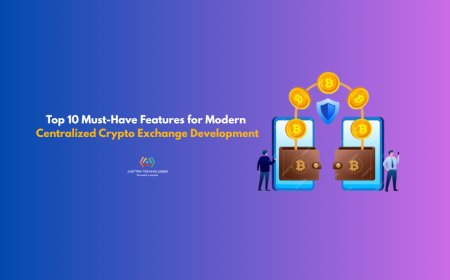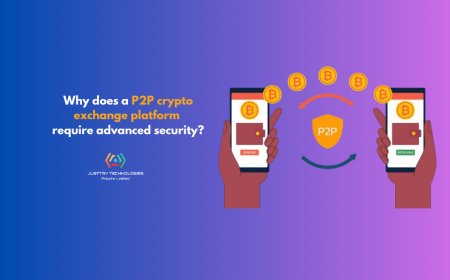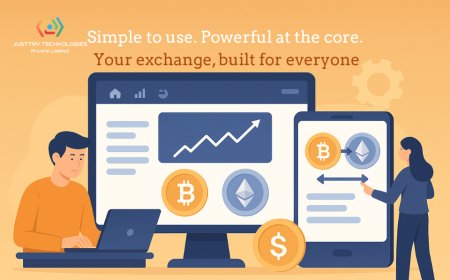Creating Connection at Scale via Web 3.0 Marketing: Transformative Trends That Matter
Explore how Web 3.0 marketing is reshaping brand engagement at scale. Discover transformative trends like decentralized community building, immersive experiences, and trust-driven branding.

Web 3.0 is not just a shift in technology; it's a redefinition of how brands connect with people, where decentralization, trust, and ownership converge to build meaningful relationships at scale. Unlike Web 2.0, where users are the product and platforms act as gatekeepers, Web 3.0 introduces a more inclusive, transparent, and community-driven landscape. In this new environment, marketing becomes more than just clicks and conversions; it becomes about collaboration, value exchange, and long-term engagement. This blog dives deep into the transformative trends that are enabling brands to build real connections with users in the Web 3.0 world, exploring how these shifts unlock scalable, personalized, and authentic communication.
1. The Rise of Ownership-Based Engagement
In the Web 3.0 era, users no longer just consume content; they participate, contribute, and co-own experiences. This change in dynamic has led to a surge in ownership-based engagement models, where users are rewarded for their time, data, and attention. Instead of passive scrolling or centralized likes, brands now offer tokens, NFTs, or access rights in exchange for participation, bringing users into the ecosystem as stakeholders rather than spectators.
-
Users become part of the brands value chain through token-gated experiences and incentivized actions.
-
Loyalty shifts from superficial rewards to community recognition, governance participation, and access to exclusive content.
-
Brands can create emotional resonance by giving users a tangible stake in the projects success.
-
Ownership-based models lead to higher retention and deeper user advocacy across digital communities.
2. Community as the Core of the Funnel
Web 3.0 marketing flips the traditional funnel on its head. Instead of treating the community as an afterthought post-conversion, successful projects build community at the center of the experience. This shift redefines metrics of success from traffic and impressions to engagement, DAO votes, Discord activity, and long-term involvement.
-
Building an active and empowered community boosts trust and long-term brand equity.
-
Communities help co-create content, amplify campaigns, and even influence roadmap decisions.
-
Native tools like token-gated Discords, on-chain voting, and snapshot proposals give users real power.
-
The feedback loop becomes continuous, improving both product and marketing strategies in real-time.
3. Trustless Technology with Trust-Driven Branding
Paradoxically, Web 3.0 relies on "trustless" technology blockchains, smart contracts, and decentralized protocolsbut brands must still build deep emotional trust to grow. Projects that scale successfully combine transparent systems with branding strategies that emphasize ethics, values, and long-term commitment.
-
Transparency in tokenomics, governance, and development strengthens user confidence.
-
Human-first branding, storytelling, and public roadmaps build credibility in anonymous or pseudonymous environments.
-
Proof-of-community and proof-of-commitment (e.g., vesting schedules, audits, partnerships) help bridge the trust gap.
-
Clear messaging about decentralization benefits can counter skepticism from non-technical audiences.
4. From Influencers to Networked KOL Ecosystems
The influencer marketing model is evolving in Web 3.0. Instead of relying on one-off endorsements, successful projects build decentralized networks of KOLs (Key Opinion Leaders) who act more like co-creators or collaborators. These KOLs bring niche reach, technical understanding, and community resonance.
-
Projects now co-launch with KOLs who align with the brand ethos and decentralization values.
-
Incentives are structured around long-term outcomes, not just traffic spikes think shared ownership or ambassador programs.
-
KOLs contribute to product testing, roadmap feedback, and community moderation, not just promotion.
-
The result is a more authentic and trusted marketing channel that scales across multiple communities.
5. Real-Time, On-Chain Marketing Metrics
Web 3.0 provides marketers with access to real-time, transparent, and immutable data via on-chain analytics. This enables faster iteration, better segmentation, and smarter allocation of marketing resources based on actual user behaviors, not approximations.
-
On-chain data allows segmentation based on wallet behavior, token holdings, governance activity, and staking patterns.
-
Projects can track campaign success through token distribution, NFT minting, and protocol engagement without reliance on cookies.
-
Smart contract events become measurable touchpoints in the marketing funnel.
-
Data transparency builds user trust and improves internal decision-making speed and accuracy.
6. Content as Currency in a Decentralized Web
As attention spans shrink and digital noise increases, valuable content becomes a form of currency in the decentralized marketing landscape. In Web 3.0, content isn't just consumed it's remixed, repurposed, co-created, and even monetized by the community.
-
Decentralized content platforms allow users to earn from sharing, curating, or translating brand materials.
-
Visual content (memes, infographics, tutorials) spreads faster and scales more effectively than traditional blog posts.
-
Community-led campaigns (e.g., contests, bounty tasks) produce authentic content at low cost.
-
Content becomes evergreen as it gets redistributed across DAOs, Discords, Telegrams, and blockchain-based social platforms.
7. Gamified Growth and Participation Loops
Gamification is central to Web 3.0 user acquisition and retention. Projects use quests, challenges, airdrops, and leaderboard mechanics to turn passive users into active contributors. These participation loops not only drive behavior but also foster emotional loyalty and community pride.
-
Users complete missions to unlock NFTs, tokens, or voting power, creating a feedback loop of action and reward.
-
Gamified onboarding improves retention rates and reduces education friction for new users.
-
Events like "learn-to-earn" or "build-to-earn" drive both engagement and understanding of core product features.
-
Social bragging rights and badge systems enhance user motivation and viral potential.
8. Multisensory and Immersive Brand Experiences
In the Web 3.0 era, marketing is no longer confined to screens and static websites. It extends into virtual worlds, metaverse activations, interactive NFTs, and immersive storytellingall designed to foster deeper emotional connections.
-
Metaverse events, virtual meetups, and decentralized conferences create memorable brand moments.
-
Brands build virtual HQs and community lounges, allowing users to interact in real time.
-
Interactive NFTs act as gateways to new experiences, content drops, or unlockable features.
-
Multisensory design (sound, motion, interaction) increases engagement and shareability.
9. Permissionless Collaboration and Co-Marketing Models
Traditional co-marketing often required formal agreements and centralized negotiations. In Web 3.0, projects collaborate organically via token swaps, shared staking pools, cross-promotions, or ecosystem airdrops, without needing a middleman or slow contract cycles.
-
Token pairings and shared pools incentivize joint growth between aligned projects.
-
Partner NFTs or collectibles help bridge audiences while maintaining brand autonomy.
-
Permissionless building encourages third-party developers to create marketing tools or community extensions.
-
Brands can plug into ecosystems like Layer 2s, bridges, or DAOs to expand visibility instantly.
10. Redefining Organic Growth in Decentralized Networks
Organic growth in Web 3.0 doesn't rely on SEO alone; it thrives through protocol adoption, community referrals, decentralized virality, and word-of-mouth marketing. Growth becomes horizontal rather than top-down.
-
Protocol-native marketing includes staking incentives, governance participation, and reward loops.
-
Referral systems driven by smart contracts ensure transparent attribution and fair payouts.
-
Viral campaigns are often powered by memes, tokenized incentives, and micro-DAO collaborations.
-
The community itself becomes the marketing engine, scaling brand value across interconnected networks.
Conclusion
Web 3.0 marketing isnt just a new channel; 3 its a fundamental shift in how brands build, communicate, and grow. As users demand transparency, ownership, and participation, the future of marketing lies in community-driven, immersive, and decentralized strategies that scale connection, not just clicks. From trustless tech with trust-rich branding to gamified loops and content-led currency, these transformative trends offer marketers the blueprint for creating lasting relationships in a rapidly evolving digital world. Brands that embrace this shift today will not only stay relevant but will shape the next generation of engagement in ways that are more human, meaningful, and scalable than ever before.

























